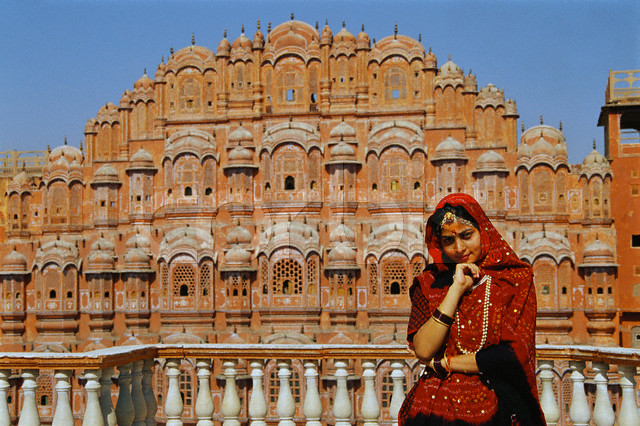Hawa Mahal, literally translated as 'Palace Of The Winds', is one of the prominent tourist attractions in the city of Jaipur, Rajasthan, a state in North-West India.
Located in the heart of Jaipur, this beautiful five-storey palace was constructed in 1799 by Maharaja Sawai Pratap Singh.
The main architect of this palace built of red and pink sandstone, is Lal Chand Ustad and the palace is believed to have been constructed in the form of the crown of Krishna, the Hindu god.
Considered as an embodiment of Rajputana architecture, the main highlight of Hawa Mahal is its pyramid shape and its 953 windows or 'Jharokhas' which are decorated with intricate designs. This enabled free circulation of air within the structure.
The Purdah system followed by the Rajputs seems to be the main intention behind the construction of the Mahal; to facilitate the royal women and provide them a view of everyday life and the royal processions through the windows. This gave them a sense of freedom without appearing in public.
Its entrance is a door which leads to a spacious courtyard surrounded by two-storey buildings on three sides. Of the five storeys of the Mahal, the top three storeys have the thickness of a single room while the bottom storeys have courtyards. The interior of the Hawa Mahal is stark and plain with passages and pillars reaching to the top storey. The building does not have stairs to reach the upper floors; the storeys are connected by slopes.
